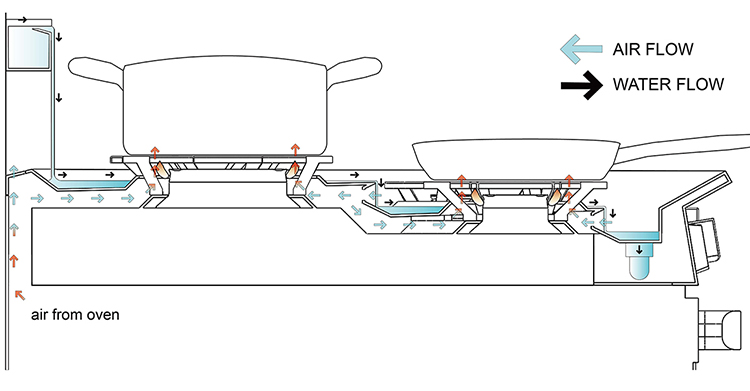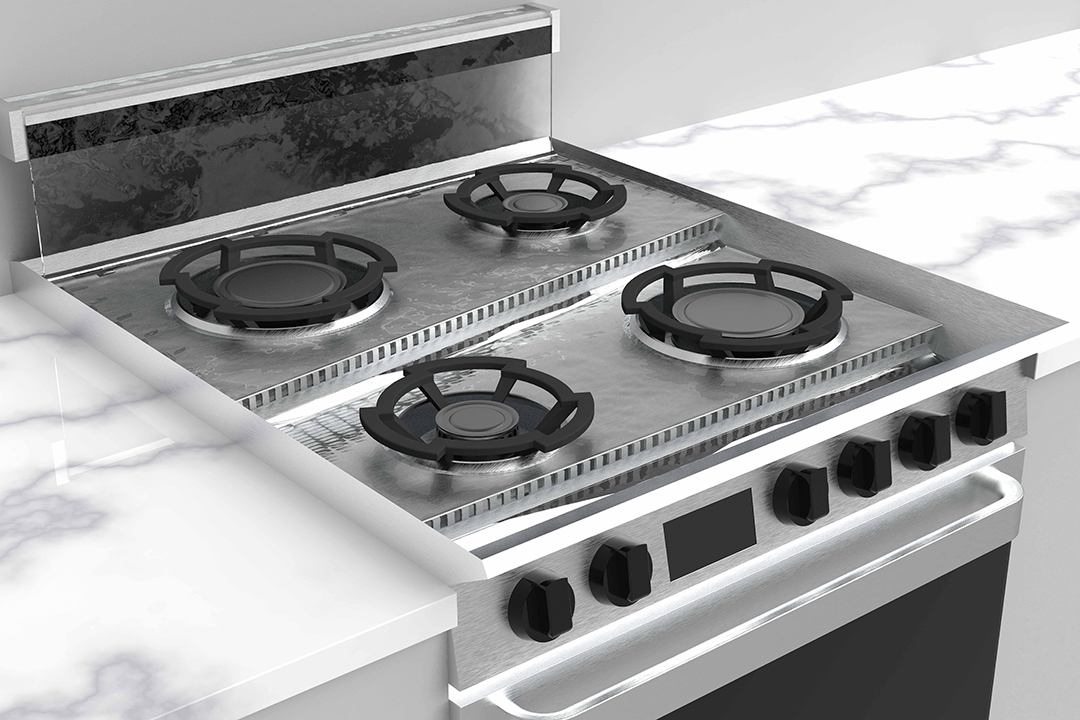Industrial designer's automated cleaning stove wins exclusive award
Shih-Hsuan Huang's "Stream Stove" has received international recognition.
For those who struggle making a habit of cleaning the stove top after every meal, an RIT industrial designer has the solution.
And he was honored for the innovation.
Shih-Hsuan “Doug” Huang ’19 MFA (Industrial Design) created an automated cleaning stove that was among just 39 winners in a competition with more than 4,000 entries from 38 countries. Huang won a Haier Design Prize in the student iF Design Talent Award for his “Stream Stove” design. The international design competition is one of the largest in the world for students and recent graduates.
Huang’s design imitates the terrain of a waterfall, with water acting as an automated cleaning agent to streamline the stove-cleaning process and eliminate the need for manual maintenance.
The system, which features a slightly inclined surfacethat allows water to cover it,uses a flow of water to wash away dirt generated from cooking. The running waterstarts when the stove is fired up, and the flow increases to fully clean the stovewhen the gas is turned off.

For their part, users only need to dispose of the residue washed into a collection.And with the cooking top no longer dirty, the design functions as a water fountain decoration in the kitchen, too.
The “Stream Stove” is also a student finalist in the Industrial Designers Society of America’s 2019 International Design Excellence Awards.
“I like cooking, and I like to keep the stove clean after using,” said Huang, from Taiwan. “However, it takes too much time cleaning after every use, and if it's not cleaned, it will become a stubborn dirt that is even harder to wipe out after continuously heating.
“Based on my experience, dirty dishes are easier to clean as soon as you finish eating. And since we also use water to wash dishes, I figured why not find a way to clean the stove and keep it clean by using water.”
Huang said he applied the techniques developed in RIT’s Industrial Design MFA program to make the “Stream Stove.”
“The MFA program was the first step in my dream of being a designer, and I am thankful that I was (at RIT),” Huang said. “I learned the sense of beauty, brainstorming process, sketching and 3D modeling to prototype making. I was encouraged with full support from my professors. The tools and design concepts I learned have helped me connect my knowledge and experience.”









